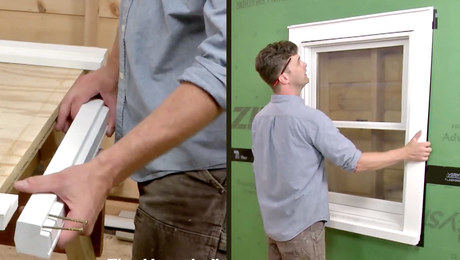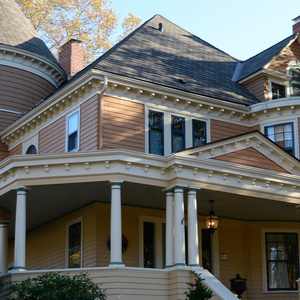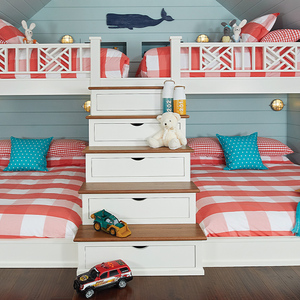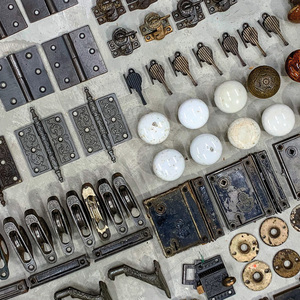2000 sq. ft addition–100 amp subpanel??
I am adding a 2200 square foot addition to my 2000 sq. foot home. We are an older couple and my son and his family is moving into the older half as soon as the newer half is done. So the new half, although attached will have all the normal things a typical house has. The older half has a newer (10 years) 200 amp service. The electrician is saying he will run a 100 amp subpanel to the new addition. I’m no electrician, but why would a house that is the same size only need half as much power? The service is supplied by three 4/0 aluminum cables. (Not three pair, but only three). The guy from the power company says these three cables can handle up to 400 amps. Everything else I have read says it can only handle 200. I am I going to be short of power in my new addition??



















Replies
You're going to hear this from the pros here who will offer more detailed advice, so you might as well get started:
List ALL of the appliances that could potentially become a load in both parts of the dwelling...especially water heaters, clothes dryers, any resistance baseboard heaters, air conditioning...electric boilers? welders in the shop? You have to figure the potential load and the apply some calculations to come up with the required service and cable sizing.
Or maybe your electrician has already done this?
How about it, 4LORN1?
While not an electrician by trade, I can estimate that you might run low on power in the new addition under certain conditions. You should also check local codes which normally dictate minimum amps for your size home. (those are almost always lower than nominal) It's certainly not uncommon for a 4000 sq ft home to have only 200-300 amp service, but that assumes only one family and no duplication of major systems like HVAC and appliances.
Without knowing how the space is configured in terms of rooms, outlets, fixtures, intended appliances (electric vs gas) it's impossible to calculate the total load. I'm hoping your electrician has done that work in some detail instead of just holding up his thumb and saying "looks like it'll take about 100 amps". If you are sharing lots of common areas, then your needs will be less.
Will your HVAC be a new system or slaved off the main house? Clearly, if you're getting an additional A/C unit, you'll need better than 100 amps in the summer for both the unit and other circuits. (unless you enjoy dimming lights)
Will you be splitting up the utilities on a separate meter? I'm guessing the answer is 'no' if a subpanel is being discussed.
In short, you can never have too much power, and now is the time to wire it up. Even if you don't put in the circuits/breakers, install a big enough panel and conduit to handle additional capacity in the future should you need it.
BTW, Your power guy is wrong if he said ONE 4/0 cable could handle 400 amps. What he probably meant was that the combined capacity of both 4/0 hot leads was 400 amps. Remember that the capacity of cables is related not just to their gauge, but also to their length and composition.
I personally would have them put in a 200 amp sub-panel. My parents have a small older house with a 100 amp panel. If the AC is going, and the oven, and the dryer, they have problems. If my brother is there and plugs the AC off his camp trailer in and they're not careful what's running they have problems.
I'd err on the side of more then enough power.
I'd assume with the size of the addition it'll have a seperate heating system, cooling system, kitchen, waterheater, ect.. It's its own house, I'd size the service as such.
Just my opinion.
Well I talked to electrician today, and he said he IS going to make the subpanel 200 Amp. Thank goodness. Yes there are totally separate HVAC systems. I didn't go into details with him, but I guess I have to take his word for it. If the lights dim and breakers trip later on, I have his number! I still don't quite undertand how the 4/0 can handle it, but I guess he has a way. They are a well known reputable shop in this area, so I'm not too worried.
Well let's see.....
You have a 2000 sq. ft house, and when it was built, you installed a 200 amp main service, and main panel. Sounds quite reasonable so far.
Now you plan to add on, more than doubling the total amount of floorspace. Yet there is no thought of increasing the main panel capacity? No planned increase in the main service? Only a sub-panel of whatever capacity?
Well, if the additional floorspace will have only a few nightlights, then perhaps you'll be OK. But if you intend to heat/cool it, and have some wall plugs for real appliances, then you need to re-think the plan. You might need more capacity at the service entrance.
Spend some time with a qualified electrical contractor. As mentioned by previous replies, discuss what electrical devices will be in use. Ask them what they would do if this was their house. If an electrical contractor (an ethical, reputable one) agrees that a subpanel is all that's needed, then go with that. If not, plan the service increase.
I have a 100amp panel on my 2371 sqft house wich is maxed out. allow yourself space for growth, and this way you won't have to load so many conv.outlets on two or three circuits. My suggestion is to go with the 200 amp panel. Hack
i'm in the process of g/c ing and building my new home3100sq ft.i first put in a 200 amp service but started running short of spaces on the 42 slot panel.i got wiring a house by rex caldwell(great book) from tauton press and he suggested running two 200 amp panels which i did and it works great.i now have extra space for the future and i didnt have to over load a thing.my service coming in is the same as yours 3 4/0 cables and i was told from the power company is that they are rated for 400 amps but you have to derate them by 20% so that gives you 320 continuos amps. i had to put in a 400 amp meter socket (wholesale $ 175) and another 200 amp panel ($125) and of course the labor (about $325) the cost of going bigger now cant be that much more for the piece of mind it will bring later.good luck!
Just because you needed an additional pannel for more breaker space does not mean tha you needed a 400 amp service. It all depends on what your demand is.
You could have a separate circuit and breaker for each individual receptacle and two for duplex units and require 200 slots, but that still would not increase your demand.
Although a 3100 sq ft and if it used electric appliances you are probably at the upper edge of the 200 amp service and might be over with a hot tub and/or some nice woodworking tools.
This is all getting a bit technical for me! I do however have an interest in this, so I will get back in the discussion after I ask the electrician just exactly what he is going to do.....thanks guys and gals
UPDATE
Well, all the wiring rough in and "joints" are complete and the panel is wired up. The electricians are not going to make this a subpanel, but instead replace the meter socket with a much larger one and put a disconnect right next to it for this panel, since it is about 30 from the meter. I am much more satisfied with this solution. The new side will have its own 200 amp panel. Thanks for all your help!!
"The service is supplied by three 4/0 aluminum cables"....."The guy from the power company says these wires can handle up to 400 amps. Everything else I have read says it can only handle 200."
Rajikhalaf, most residential services have a 3 wire service...this is composed of 2 hot legs and a ground. Each leg ( wire) normally carries 120 volts, hence the 2 hot legs combined can provide you with 240 voltage for those appliances that you choose to run off of 240. This is pretty standard .
Your power co. guy is correct. Each individual 4/0 cable (leg) can handle up to 200 amps maximum. ( note, if your cable was 4/0 copper, it could handle even slightly more than the aluminum 4/0 cable) Since you have 2 hot legs, 200 amps X 2 = 400 amps. Thus the 2 cable legs COMBINED can handle a total of 400 amps.
If it was me, instead of a subpanel running off a circuit breaker from the existing panel, I would change my existing meter socket configuration into a ganged set comprising of 2 meters...one to mete the original half of the home, and the other to mete out the new addition. Without the seperate meters, there can be no seperate billing. I think I would want seperate billing for each family to avoid possible bickering later on.The service wires for the meter controlling the original home simply runs back into your original panel box. The other meter can have it's service wires enter inside the building envelope at the same location, and from that point, you could set up a 200 amp disconnect box next to your original panel box, and then continue to run new service wire over to the new home addition, and have the breaker box mounted somewhere in this new addition.
This is just one method. And, I'm not suggesting this to be the "best" method for you. There are several ways ( along with various types of electrical equipment that can be used) to mount and relocate new meter/panel box equipment. I would again contact your local power company and arrange to speak with their "tech" personnel...they most certainly could give you the best information on how to proceed and make suggestions as to what type of configuration would best serve your needs. That is their business.
Davo
Since you have 2 hot legs, 200 amps X 2 = 400 amps. Thus the 2 cable legs COMBINED can handle a total of 400 amps.
Careful there (assuming you're in the US). Since the cables wires are on opposite legs, they aren't doubling the amperage. Instead, they are doubling the voltage. So, to correctly restate the above........
Since you have two hot legs, each carrying 200 amps of 120, 2 X 120 volts (@200 amps) = 240 volts (@200 amps). Thus the 2 cable legs combined can handle a total of 200 amps of 240.
Vast projects should not be founded on half vast ideas.
Since you have two hot legs, each carrying 200 amps of 120, 2 X 120 volts (@200 amps) = 240 volts (@200 amps). Thus the 2 cable legs combined can handle a total of 200 amps of 240.
At this time they are handling 200 amps. If the electric Co. said 400 amps they can probably handle 400 amp service. The HO will have to check locally with a pro electrician or the power co's tech dept.
None of the advice (including mine), given here is definitive.
SamT
No, he wrong.
The standard is how much 240 load that it can handle and that 200 amps.
The NEC rating for SERVICE ENTRANACE WIRING allows 200 amps for 4/0 AL or 250 amps for 4/0 CU.
But that is only for YOUR service entrance wiring.
There is no codes on what the power company uses for THERE DROPS.
" I would change my existing meter socket configuration into a ganged set comprising of 2 meters...one to mete the original half of the home, and the other to mete out the new addition."
That might not be allowed, both by local zoning laws and by power company rules.